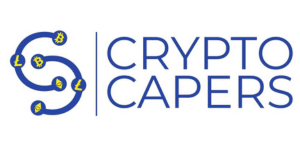With the cryptocurrency market evolving rapidly, leveraging effective altcoin trading strategies can significantly enhance your profit potential. In this blog post, you will discover various techniques that can help you navigate the complexities of altcoin investments. From understanding market trends to implementing risk management practices, these strategies will empower you to make informed decisions and maximize your returns in the dynamic world of altcoins.
Key Takeaways:
- Diversification is imperative for minimizing risk and maximizing potential returns in altcoin trading.
- Utilizing technical analysis can help traders identify market trends and make informed decisions.
- Setting stop-loss orders is important to protect investments and limit potential losses in volatile markets.
Understanding Altcoins
The world of cryptocurrencies extends beyond Bitcoin, encompassing thousands of alternative coins known as altcoins. These digital assets offer a diverse range of features, purposes, and technologies, allowing you to explore various investment opportunities in the crypto market. By understanding altcoins, you can make more informed decisions and uncover potential profit avenues that align with your trading strategies.
What Are Altcoins?
Between the coins that vary in functionality, use case, and underlying technology, altcoins represent any cryptocurrency that is not Bitcoin. They were introduced to address perceived limitations of Bitcoin and to explore new possibilities in decentralized finance, privacy, and innovative applications like smart contracts and tokenization.
Differences Between Bitcoin and Altcoins
To grasp the trading landscape better, it’s important to understand the differences between Bitcoin and altcoins. Bitcoin is primarily recognized as a digital store of value and the pioneering cryptocurrency, while altcoins often serve distinct purposes, featuring enhancements in scalability, transaction speed, or specific functionalities tailored for certain industries.
The distinctions between Bitcoin and altcoins significantly influence your trading decisions. Bitcoin remains the most established and widely accepted cryptocurrency, acting as a market benchmark. In contrast, altcoins can be more volatile and may offer higher potential returns. However, they also carry increased risks. By evaluating the unique value propositions and market dynamics of different altcoins, you can strategically position your portfolio to capitalize on emerging trends and technology advancements in the crypto space.
Market Analysis Techniques
Some of the most effective altcoin trading strategies revolve around market analysis techniques that help you understand price movements and trends. Utilizing comprehensive research and analysis can aid your decision-making process significantly. You can learn more about this by checking Altcoin Trading Strategy: How To Trade & Short Altcoin 2024.
Fundamental Analysis
By performing fundamental analysis, you evaluate the intrinsic value of an altcoin by examining factors such as technology, team, roadmap, and market demand. This method enables you to gauge the long-term potential of a crypto asset, providing insight into whether it is undervalued or overvalued in the market.
Technical Analysis
Above all, technical analysis focuses on analyzing price charts and historical data to forecast future price movements. By studying patterns and trends, you can make informed trading decisions that align with market behavior.
Analysis of technical indicators such as moving averages, RSI, and MACD can significantly enhance your trading strategy. You should also look for support and resistance levels, trend lines, and chart patterns to gain a comprehensive understanding of price action. By applying these techniques, you can identify entry and exit points more effectively, increasing your chances of maximizing profits.
Choosing the Right Altcoin
Despite the vast number of altcoins available, selecting the right one can significantly impact your trading success. To enhance your knowledge, consider checking out Cryptocurrency Trading Strategies: A Beginner’s Guide to … This resource will help you make informed decisions while navigating the altcoin landscape.
Factors to Consider
Before venturing into the world of altcoins, you should evaluate several factors to guide your decision-making process:
- Market capitalization and liquidity
- Historical performance and volatility
- Technology and development team
- Community support and partnerships
The combination of these elements can help you identify promising altcoins.
Popular Altcoin Projects
After assessing various factors, take a closer look at popular altcoin projects that have earned recognition within the crypto community. These projects often have strong foundations, innovative technology, and active user bases that contribute to their growth and stability.
Factors such as community engagement, ongoing developments, and collaboration with other platforms can enhance these projects’ potential. Notable examples include Ethereum, Cardano, and Binance Coin, known for their solid frameworks and diverse use cases. Engaging with these popular altcoins can provide you with valuable opportunities to grow your portfolio in the ever-evolving crypto market.
Trading Strategies
To navigate the altcoin market successfully, employing effective trading strategies is necessary. By utilizing techniques tailored to your trading style and risk tolerance, you can enhance your profit potential significantly. Whether you prefer short-term gains or longer-term investments, understanding the different strategies available will empower you to make informed decisions that align with your financial goals.
Day Trading
Among the various trading strategies, day trading is a popular choice for those looking to capitalize on short-term price fluctuations in the altcoin market. This approach involves entering and exiting positions within the same trading day, allowing you to avoid overnight risks while potentially securing quick profits. To be successful, you must closely monitor market trends and have a solid understanding of technical analysis.
Swing Trading
Below the surface of daily market movements, swing trading allows you to capitalize on price swings over several days or weeks. This approach requires less time commitment than day trading and is particularly advantageous for those who wish to trade without being glued to their screens constantly. As a swing trader, you can identify entry and exit points based on overall market sentiment and price trends.
For instance, you may choose to buy an altcoin after it shows signs of an uptrend and hold it until a target price is reached or a reversal pattern emerges. This strategy often involves the use of technical analysis tools, such as moving averages and trend lines, to help guide your decisions. By focusing on larger price movements, swing trading can yield significant profits while accommodating your lifestyle and time constraints.
Risk Management
All successful traders understand the importance of risk management in maximizing profit potential. By implementing effective strategies, you can protect your capital while still taking advantage of market opportunities. Risk management helps you minimize losses and stay in the game longer, paving the way for sustainable success in your altcoin trading journey.
Setting Stop-Loss Orders
An vital part of your risk management strategy is setting stop-loss orders. This tool allows you to predetermine the maximum loss you are willing to accept on a trade. By automatically selling your assets at a specified price, stop-loss orders help safeguard your investment from significant downturns, letting you focus on other opportunities in the market.
Diversification Techniques
Any effective risk management approach should include diversification techniques. By spreading your investments across various altcoins, you can reduce the impact of a poor-performing asset on your overall portfolio. Instead of concentrating your funds in a single coin, consider investing in multiple projects with different use cases, market caps, and technological advancements. This way, you protect your capital while still being positioned to take advantage of multiple growth opportunities.
Orders can further enhance your diversification strategy by allowing you to predefine entry and exit points for various assets. Implementing limit orders helps you set specific prices at which to buy or sell altcoins, ensuring that you can capitalize on market fluctuations without constantly monitoring your investments. By combining stop-loss orders and diversified asset allocation, you create a more resilient trading approach that can weather market volatility.
Tools and Resources for Altcoin Traders
Many traders overlook the importance of having the right tools and resources at their disposal when it comes to altcoin trading. By leveraging effective platforms, analytical tools, and timely information, you can significantly enhance your trading experience and decision-making process. Investing time to familiarize yourself with various tools will empower you to optimize your strategies and maximize profits.
Trading Platforms
Along your trading journey, selecting a reliable trading platform is vital. Different platforms offer various features, fees, and security levels, so it’s vital to choose one that aligns with your trading style and needs. Look for user-friendly interfaces, quick transaction speeds, and strong customer support to ensure a smooth trading experience.
Analytical Tools
Below the surface of trading platforms, analytical tools can provide you with valuable insights into market trends and altcoin performance. By utilizing charting software, technical indicators, and news aggregators, you can make data-driven decisions that enhance your trading outcomes.
Plus, employing analytical tools not only helps you track price movements and volume changes but can also facilitate deeper market analysis through advanced metrics. Understanding trends, support, and resistance levels allows you to fine-tune your trading strategies. Incorporating these tools into your routine will empower you to make informed decisions, potentially leading to greater trading success and profit maximization.
To wrap up
Drawing together the various altcoin trading strategies discussed, you now have the tools to maximize your profit potential in the vibrant world of cryptocurrency. By diversifying your portfolio, leveraging market analysis, and employing risk management techniques, you can navigate the complexities of altcoin trading with greater confidence. Stay informed about market trends and continuously refine your strategies to adapt to changing conditions. With these insights, you can enhance your trading experience and work towards achieving your financial goals in the altcoin arena.
Q: What are some effective Altcoin trading strategies for beginners?
A: For beginners, it’s important to start with a few fundamental strategies. First, consider dollar-cost averaging, which involves consistently investing a fixed amount of money into altcoins over time, reducing the impact of market volatility. Next, you might explore trend following, where you identify and follow market trends to make buying or selling decisions. Additionally, using stop-loss orders can help you protect your investment by automatically selling your altcoins if they fall to a certain price. Finally, staying informed about the altcoin market news will aid in making timely trading decisions.
Q: How can I analyze altcoin performance before trading?
A: Analyzing altcoin performance is crucial for informed trading. Start by looking at historical price charts to identify trends and patterns; tools such as candlestick patterns and moving averages can provide insights. Next, examine the altcoin’s market capitalization, trading volume, and liquidity, as these factors influence price stability and potential gains. Additionally, consider the project’s fundamentals by reviewing its whitepaper, development team, and use case in the market. Community engagement through social media platforms and forums can also provide clues about market sentiment.
Q: What risks should I be aware of when trading altcoins?
A: Trading altcoins involves several risks that traders should be mindful of. Altcoins can exhibit high volatility, leading to significant price fluctuations within short periods. This volatility can result in both large profits and sharp losses. Additionally, some altcoins may suffer from low liquidity, making it difficult to buy or sell without impacting the market price. Moreover, the cryptocurrency market is prone to various scams and fraudulent projects, making thorough research crucial. It’s advisable to only invest what you can afford to lose and to diversify your portfolio to mitigate risk.








